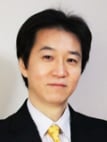Biography
Tadao Nagatsuma received B.S., M.S., and Ph.D. degrees in electronic engineering from Kyushu University, Fukuoka, Japan, in 1981, 1983, and 1986, respectively. From 1986 to 2007, he was with Nippon Telegraph and Telephone Corporation (NTT), Atsugi, Kanagawa, Japan. Since 2007, he has been a Professor at Graduate School of Engineering Science, Osaka University, and a Director of the Science and Technology Entrepreneurship Laboratory at Osaka University. His research interests include millimeter-wave and terahertz photonics and their applications to wireless communications, sensing, and measurement. He is a Fellow of the IEEE, a Fellow of the Institute of Electronics, Information and Communication Engineers (IEICE), Japan, and a Fellow of the Electromagnetics Academy. He currently serves as an Associate Editor of the IEEE Photonics Technology Letters, and a Director of the IEICE.
Presentations
Millimeter-wave and Terahertz Applications Enabled by Photonics
This lecture presents how effectively photonics technologies are implemented not only in generation, detection and transmission of continuous millimetre waves (MMW) and terahertz (THz) waves, but also in system applications such as communications, measurements, spectroscopy and imaging to efficiently enhance their performance. After briefly reviewing key devices and components, first, wireless communications applications are discussed aiming at a data rate of terabit/s. Next, frequency-domain spectroscopy systems are presented, in particular focusing on the approach to increasing a measurement sensitivity, and a similar technique is successfully applied to visualization of MMW/THz electric-field radiation and propagation, which is crucial for the characterization of devices and systems. Finally, in order to make MMW/THz systems more compact and cost-effective, recent challenges in photonic integration technologies are described, which include monolithically integrated photonic signal generators, and hybrid integration schemes using, for example, photonic crystal platforms.
